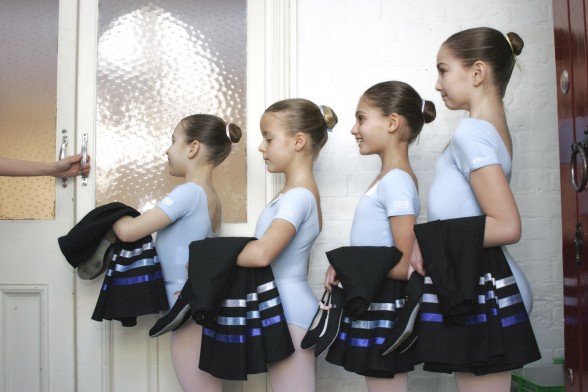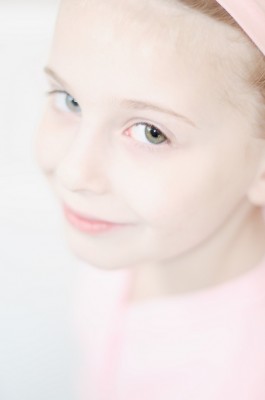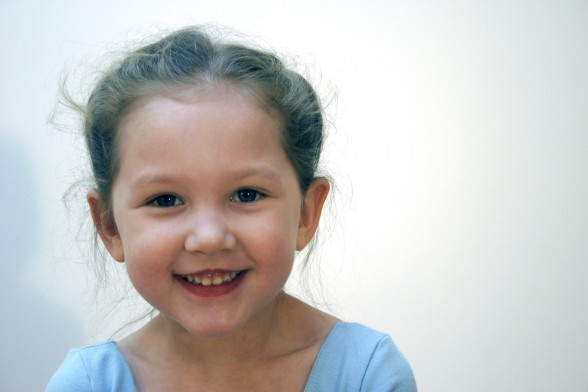Do you remember your teachers calling out “don’t forget to smile” just before you walked into your dance exams?
Do you now remind your own students to smile as they enter their dance examinations?
This article challenges the traditional practice of encouraging dance students to smile en route through the examination door and asks
…what does this actually accomplish?

Learning By Example
I am convinced that the majority of teachers who employ this practice have simply adopted it from their predecessors; subconsciously picking up the habit from our own teachers. In this way, many might not have ever really thought about the consequences of this action – desired or otherwise. This is completely understandable, but perhaps it is now time for a review.
Personal Reflection
Many, if not all of us will remember the hastened last-minute “smile” mantra urgently called out mere seconds before walking into a dance exam as students, but do you remember how it made you feel?
Looking back, do you believe it enhanced your performance, your artistry, or your presentation? Did you remember to keep smiling for more than a few seconds after you saw the examiner looking at you? Did your smile stay on but ‘get stuck’ so it felt more like a mask than an expression; perhaps with your top lip getting stuck to your teeth? Did you feel comfortable?
The Apprehensive & Conscientious Dancer
Certainly my childhood memories of this traditional practice was that it only caused me increasing anxiety immediately before that moment in which I was expected to produce my best performance. Would I remember to smile all the way through? If the music is slow or sad should I still be smiling? Will the examiner be offended or mark me down if I forget to smile in the middle?!
Anxiety and panicked thoughts do nothing but undermine any and all hope of the apprehensive or conscientious dancer being either calm or centred when entering exam conditions, and can completely distract them from remembering their steps.
Unfavourable levels of anxiety and stress are not only entirely undesirable when considering the dancer’s welfare, but is likely to also prove detrimental to their physical and artistic performance; for it is now well documented that stress levels need to be kept low in order for the dancer, or athlete, to perform at their best.
For all but particularly nervous or young students, it might then be more prudent to focus on helping them feel calm, positive and at ease before entering an exam.

By working in this way, not only is the dancer more likely to produce their best work, but they are more likely to enjoy the experience and thus often produce the illusive and originally desired effect: a natural smile.
But what of those dancers who appear unencumbered by pre-show nerves? Surly to ask them to smile is unlikely to elevate anxiety levels? Well, quite possibly yes, they might well be unaffected in this way, but that’s not to say that the commandment to smile is beneficial for them either…
The Confident Dancer & Natural Performer
Most teachers are likely to be familiar with the three most common personality types who often do not seem to feel the pressure of examinations. Firstly, there is the dancer who is effortlessly confident, exuberant and a natural performer. This dancer, it may be assumed, is the most likely of all to unconsciously smile appropriately throughout a dance exam, and therefore any reminders to do so are unnecessary.
The Reserved Dancer
Secondly, there is the dancer who is particularly reserved or shy, who is perhaps nervous of the concept of incorporating facial expressions into their dancing at all. These students often find themselves entirely incapable of offering a smile, or indeed include any element of performance into their work, particularly when under more stressful conditions such as an exam.
In order to overcome shyness or a lack of performance quality, these students require the greatest of attention in class in nurturing their confidence, and in facilitating the long-term development of their sense of expression and artistry.
It is preposterous to think that such qualities can be ‘added in’ at the last minute by simply requesting a smile, and to do so invariably results in either no smile anyway, or worse, a ‘mask of joy’ – a vision which is invariably cringeworthy in its lack of sincerity or believability.
The Ambivalent or Unengaged Student
Lastly, there are those students whom, by default, are fairly (and sometimes stubbornly) ambivalent or entirely disinterested in the procedure of examinations. They may well be the same students who appear quite resistant to all our best efforts in the classroom, and remain, if not unengaged, certainly unresponsive or passive in their attitude. It may be agreed by the majority that these dancers are extremely unlikely to smile simply as they have been asked to do so, and to remind these students to ‘slap on a grin’ before running to their starting places is therefore an utter waste of time. Ideally you would hope that by taking the same approach as with the aforementioned reserved/shy dancers, they would eventually discover something innate which might then allow them to approach dance with a different mindset. However, until they do so, your comments may well fall on deaf ears.

It may at this point be safely assumed that in the majority of cases the customary pre-exam ‘smile’ reminder does little to instigate or enhance a dancer’s performance, however tempting it may be. For the students that even remember your comment beyond the seconds it takes to walk through the exam door, it seems to only ever produce an artificial and glassy-eyed ‘Pan-Am smile’ in a best-case scenario. Rather, that performance, artistry and expression are things to be continually developed over time, and syllabi-specific artistic details are best practiced long in advance of exam day; learnt simultaneously with the choreography.
As teachers and mentors, our pre-exam time with students is best spent soothing the frazzled or nervous, and offering encouragement to dancers to embrace and enjoy the experience of performing the work which they have so painstakingly prepared. Perhaps this way, a natural smile may well be an automatic consequence.
What could you say or do for students before an exam, audition, or even performance INSTEAD of reminding them to smile?
Share your ideas and suggestions in the comments!
Angeline Lucas is a freelance dance writer, teacher and lecturer based in England. She has been awarded Registered Teacher Status with the Royal Academy of Dance (RAD) and is an Approved Teacher of the Council for Dance Education & Training (CDET). Angeline trained at Northern Ballet School (NBS) and holds a Certificate of Higher Education in Dance Education, validated by RAD and the University of Surrey. Previous roles have included working as head of department, outreach coordinator and curriculum manager, and she also has experience in dance research and arts administration. Angeline has taught and lectured at various private dance studios, schools, colleges and on community programmes, and is considered to be a dedicated, experienced and enthusiastic teacher. Angeline’s greatest passion is classical ballet, and is devoted to the advancement of the art form, the promotion of accessible high-standard dance education, and facilitating the achievement of her students.

